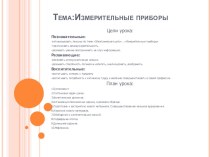- Главная
- Разное
- Бизнес и предпринимательство
- Образование
- Развлечения
- Государство
- Спорт
- Графика
- Культурология
- Еда и кулинария
- Лингвистика
- Религиоведение
- Черчение
- Физкультура
- ИЗО
- Психология
- Социология
- Английский язык
- Астрономия
- Алгебра
- Биология
- География
- Геометрия
- Детские презентации
- Информатика
- История
- Литература
- Маркетинг
- Математика
- Медицина
- Менеджмент
- Музыка
- МХК
- Немецкий язык
- ОБЖ
- Обществознание
- Окружающий мир
- Педагогика
- Русский язык
- Технология
- Физика
- Философия
- Химия
- Шаблоны, картинки для презентаций
- Экология
- Экономика
- Юриспруденция
Что такое findslide.org?
FindSlide.org - это сайт презентаций, докладов, шаблонов в формате PowerPoint.
Обратная связь
Email: Нажмите что бы посмотреть
Презентация на тему по английскому языку Святослав Храбрый (7-8 класс)
Содержание
- 2. Sviatoslav I was an early
- 3. Early life and personality
- 4. AppearenceSviatoslav's appearance has been described very clearly
- 5. Religious beliefs Sviatoslav's mother, Olga, converted to
- 6. FamilyIt is known very little of Sviatoslav's
- 7. Art and literatureSviatoslav has long been a
- 8. ReignFormally Sviatoslav became Grand Duke at 3
- 9. DeathThe Byzantine emperor induced the Pecheneg khan
- 10. Memory In memory of Svyatoslav a lot
- 11. ИсточникиКубарьков Г.Л., Тимощук
- 12. Скачать презентацию
- 13. Похожие презентации
Sviatoslav I was an early ruler of the Kievan Rus’. He was the son of Igor I of Kiev and Olga of Kiev. He ruled from 962 until 972. He is famous for his persistent campaigns in the


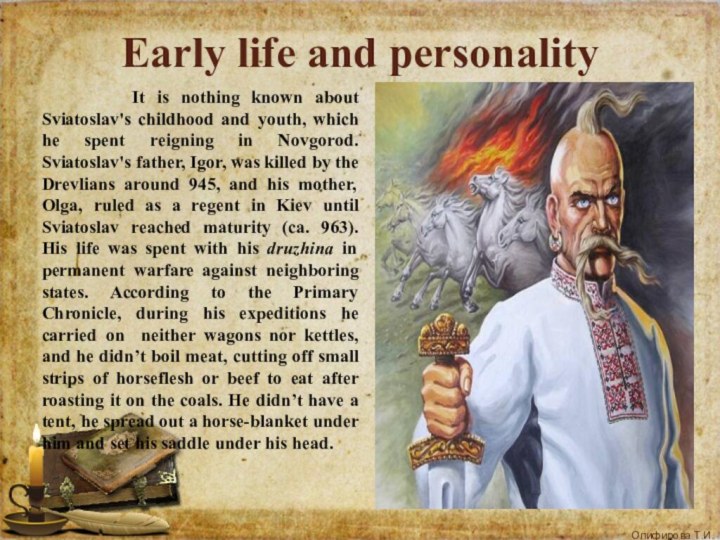
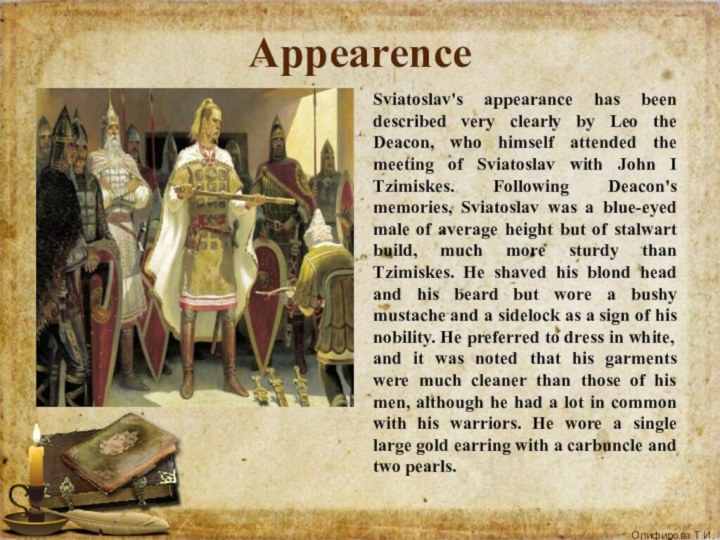
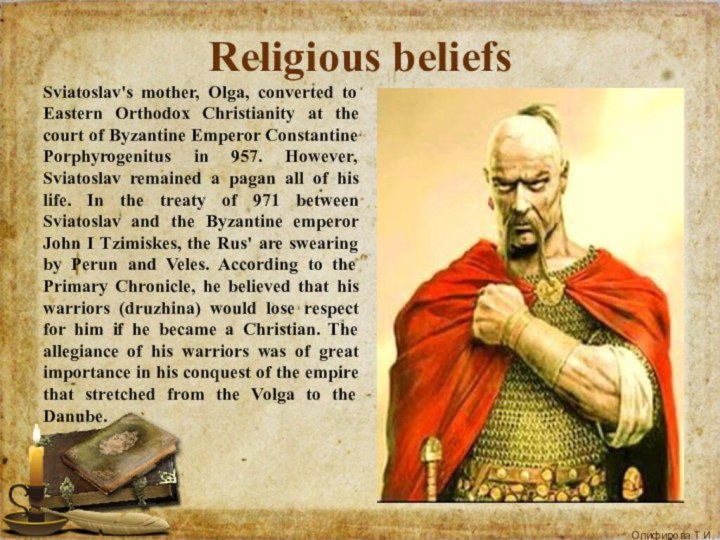

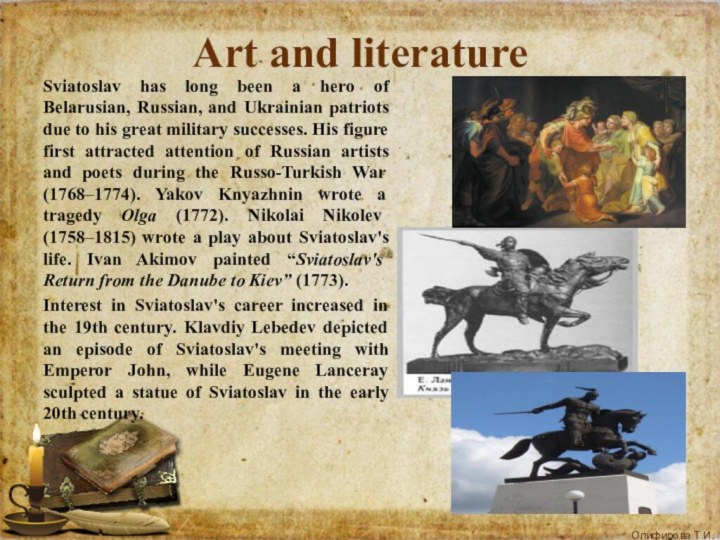





Слайд 3
Early life and personality
It
is nothing known about Sviatoslav's childhood and youth, which
he spent reigning in Novgorod. Sviatoslav's father, Igor, was killed by the Drevlians around 945, and his mother, Olga, ruled as a regent in Kiev until Sviatoslav reached maturity (ca. 963). His life was spent with his druzhina in permanent warfare against neighboring states. According to the Primary Chronicle, during his expeditions he carried on neither wagons nor kettles, and he didn’t boil meat, cutting off small strips of horseflesh or beef to eat after roasting it on the coals. He didn’t have a tent, he spread out a horse-blanket under him and set his saddle under his head.
Слайд 4
Appearence
Sviatoslav's appearance has been described very clearly by
Leo the Deacon, who himself attended the meeting of
Sviatoslav with John I Tzimiskes. Following Deacon's memories, Sviatoslav was a blue-eyed male of average height but of stalwart build, much more sturdy than Tzimiskes. He shaved his blond head and his beard but wore a bushy mustache and a sidelock as a sign of his nobility. He preferred to dress in white, and it was noted that his garments were much cleaner than those of his men, although he had a lot in common with his warriors. He wore a single large gold earring with a carbuncle and two pearls.
Слайд 5
Religious beliefs
Sviatoslav's mother, Olga, converted to Eastern Orthodox
Christianity at the court of Byzantine Emperor Constantine Porphyrogenitus
in 957. However, Sviatoslav remained a pagan all of his life. In the treaty of 971 between Sviatoslav and the Byzantine emperor John I Tzimiskes, the Rus' are swearing by Perun and Veles. According to the Primary Chronicle, he believed that his warriors (druzhina) would lose respect for him if he became a Christian. The allegiance of his warriors was of great importance in his conquest of the empire that stretched from the Volga to the Danube.
Слайд 6
Family
It is known very little of Sviatoslav's family
life. It is possible that he was not the
only (or the eldest) son of his parents. Sviatoslav had several children, but the origin of his wives is not specified in the chronicle. By his wives, he had Yaropolk and Oleg.. By Malusha, a woman of indeterminate origins Sviatoslav had Vladimir, who would ultimately break with his father's paganism and convert Rus' to Christianity.
Слайд 7
Art and literature
Sviatoslav has long been a hero
of Belarusian, Russian, and Ukrainian patriots due to his
great military successes. His figure first attracted attention of Russian artists and poets during the Russo-Turkish War (1768–1774). Yakov Knyazhnin wrote a tragedy Olga (1772). Nikolai Nikolev (1758–1815) wrote a play about Sviatoslav's life. Ivan Akimov painted “Sviatoslav's Return from the Danube to Kiev” (1773).Interest in Sviatoslav's career increased in the 19th century. Klavdiy Lebedev depicted an episode of Sviatoslav's meeting with Emperor John, while Eugene Lanceray sculpted a statue of Sviatoslav in the early 20th century.
Слайд 8
Reign
Formally Sviatoslav became Grand Duke at 3 years
old after the death in of his father in
945, the great Prince Igor, but self-rule began in around 964. The Rus’ was ruled by his mother, Princess Olga, first because of the early age of Sviatoslav, then due to his permanent stay in military campaigns.When Sviatoslav grew and matured, he began to gather a lot of brave warriors and fought a lot. And he sent messengers to other lands, as a rule, before the Declaration of war with the words: "have at you!“
When returning from a trip to Bulgaria, Sviatoslav was killed by Pechenegs in 972 on the Dnieper rapids.
Слайд 9
Death
The Byzantine emperor induced the Pecheneg khan Kurya
to kill Sviatoslav. According to the Slavic chronicle, Sveneld
attempted to warn Sviatoslav to avoid the Dnieper rapids, but the prince slighted his wise advice and was ambushed by the Pechenegs when he tried to cross the cataracts near Khortitsa early in 972. The Primary Chronicle reports that his skull was made into a chalice by the Pecheneg khan.By the end of his short life, Sviatoslav carved out for himself the largest state in Europe, eventually moving his capital in 969 from Kiev (modern-day Ukraine) to Pereyaslavets (identified as the modern village of Nufăru, Romania) on the Danube.
Слайд 10 Memory In memory of Svyatoslav a lot of monuments
were erected in Kiev, Zaporozhye, Belogorodskaya oblast and Mariupol.
Слайд 11
Источники
Кубарьков Г.Л., Тимощук В.А.
Сборник новых тем современного английского языка.-
Москва: ЗАО «БАО_ПРЕСС»,2012.
https://en.wikipedia.org/wiki/Sviatoslav_I_of_Kiev
http://www.bankoboev.ru/images/Mjg4NTg3/Bankoboev.Ru_list_bumaga_pero_svechi.jpg
http://www.tehnari.ru/attachments/f133/145763d1374755309-starinnye_knigi_raritety-369x228.png
http://www.art-3000.com/picture/?iid=58722&a=6
http://military.wikia.com/wiki/Sviatoslav_I_of_Kiev
http://www.ktgs.ru/upload/medialibrary/a92/uumdnnyeve%20bo%20pnhksuiiqhaevz.png
http://http://аполлония24.рф/http://аполлония24.рф/images/css/svecha.png
http://3.bp.blogspot.com/
-https://yandex.ru/images/?parent-reqid=1479903132906039-1275492504109762178033395-sas1-5080
http://goldisblood.net/PaganLeaders
http://bookz.ru/pics/slovo-o-_304.jpg
Источник шаблона Олифирова Т.И.



























